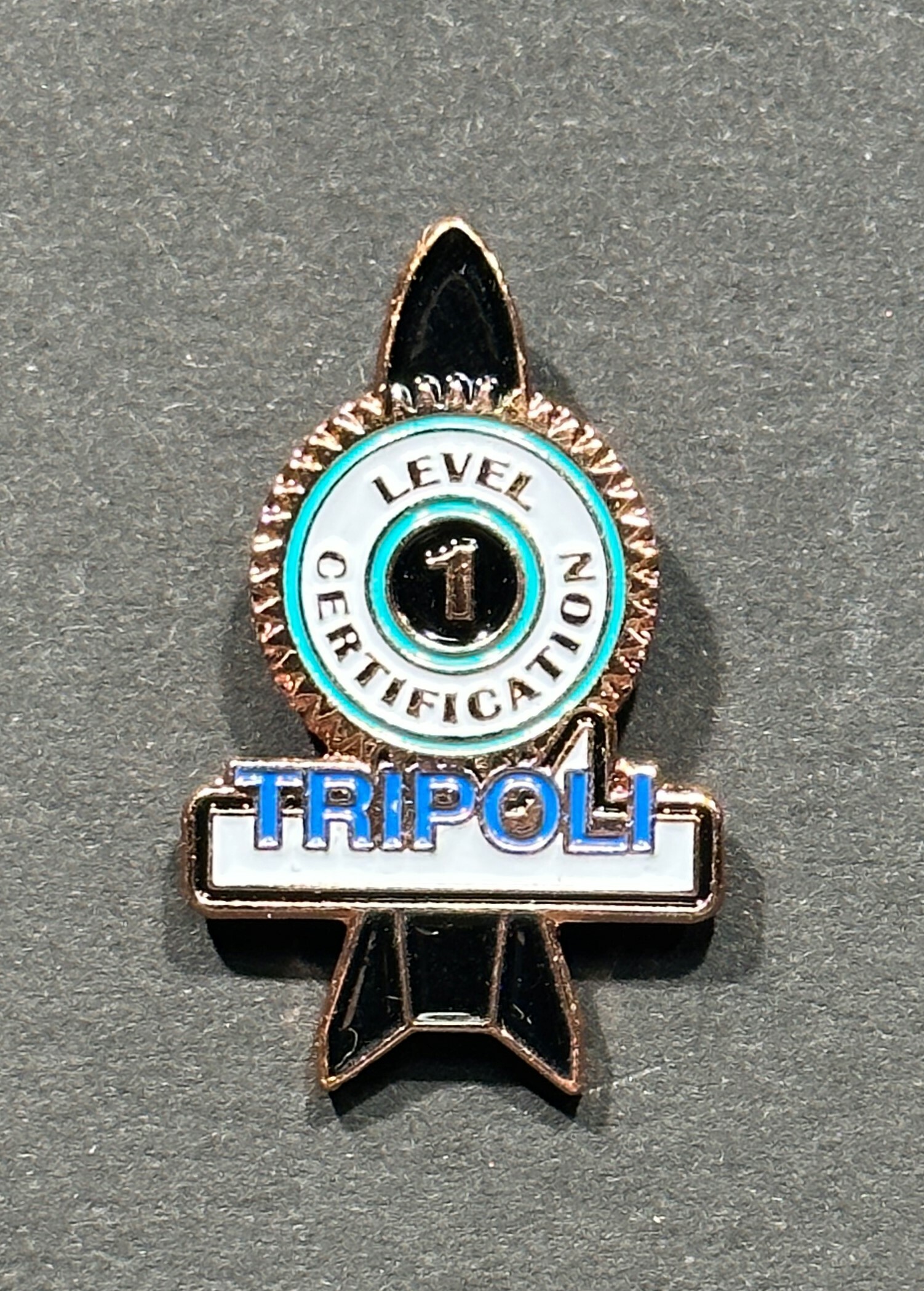Level 1 Certification

Level 1 certification is open to all students and senior members 18 years and older. The candidate must build, launch and safely recover a rocket using a certified HPR motor in the H to I impulse range. In addition, high Power Level 1 Certification allows a member to purchase and use H, and I impulse class commercial manufactured hobby motors.
Level 1 Certification Procedure
Level 1 Certification allows Tripoli members to fly High-Power Rockets with a total installed impulse up to 640 Newton-seconds.
A certification authority (Prefect, TAP, or Tripoli Director) has a responsibility to perform the following steps:
- Review of the predicted flight characteristics to ensure they comply with the TUSC and FAR 101.25 as well as any special conditions for the launch site. The certification authority may not impose additional conditions on the candidate beyond the requirements that are listed here, such as requirements for specific flight experience.
- Inspection of the prepared rocket motor to ensure it complies with the paragraph below entitled Motor.
- Pre-flight inspection of the rocket with motor to ensure it complies with the paragraphs below entitled Recovery and Airframe.
- Observation of the certification flight in accordance with the paragraph below entitled Certification Flight.
- Inspection of the recovered rocket in accordance with the paragraph below entitled Post-Flight Inspection.
- After accomplishing the steps above, the certifying authority shall determine whether the candidate’s rocket and flight constituted a successful certification. The certification authority shall make the determination for a non-certification in strict compliance with the conditions listed below in the paragraph entitled Non-Certification. The goal is for all certification authorities to apply the rules equally.
- Following a successful certification, the certification authority should sign the Universal Certification Form in the appropriate place and hand it to the candidate. The candidate is responsible for emailing it to HQ at the address listed on the bottom of the form. The form will also serve as proof that the candidate is certified at the new level until receiving a new membership card with the updated certification listed.
A irframe
irframe - The rocket must be built by the flyer. The rocket shall display on the exterior identifying the calculated center of pressure. The rocket must be of "conventional rocket design." "Odd Rockets," including flying pyramids, saucers, and flying spools, will not be allowed for any certification flight. The rocket may be either a kit or scratch built. Scratch-built rockets may contain commercially built components. The Certification Authority has the authority to refuse the use of premanufactured assemblies or rockets that do not reflect a candidate’s ability to build a rocket. Although 3D printed fin cans are allowed, rockets that are entirely 3D printed are not.
Recovery - Parachute recovery is required. Non-parachute recovery methods, such as tumble, helicopter, gliding, or others, are not permitted for certification flights. If the rocket uses dual deployment, the first recovery event is not required to use a parachute. It may be either drogueless or streamer. The main event shall use a parachute to decelerate the rocket to no more than the landing velocity allowed by the Tripoli Unified Safety Code.
Motor - The certification flight must be powered by a single certified H or I motor (total tested impulse between 160.01 and 640.00 n-sec). Staged or Clustered rockets may not be used for certification flights. The certifying authority is not required to witness the candidate build or prepare the motor but will make themselves available to answer questions about building or preparing the motor.
Electronics - Electronics are neither required nor prohibited for level 1 certification flights.
Certification Flight - A Level 1 Certification flight may occur at any insured launch. The certifying authority (i.e., Prefect, TRA Director, or TAP Member) must be present and witness the certification flight. The certifying authority must observe enough of the flight to know that the rocket ascended in a stable manner and descended in a safe manner controlled by the recovery system. The certifying authority is not required to see the entire flight.
Post-Flight Inspection - The rocket must be presented to the certifying authority for inspection as recovered (all parts included). If the rocket cannot be recovered but can be safely visually inspected in place (power lines, tree, etc.), this is acceptable. The certifying authority shall inspect the rocket for
excessive damage. Excessive damage shall be considered damage to the point that if the flyer were handed another motor, the rocket could not be placed on the pad and flown again safely. Damage caused by wind dragging after a safe landing will not cause a disqualification.
Non-Certification - Any of the following will result in the failure of a certification flight:
- Motor Cato
- Excessive Damage during flight or recovery
- Excessive damage is defined as damage to the rocket which would prevent flying it again safely.
- A zipper of a quarter caliber or less is acceptable.
- Cosmetic damage to fillets is acceptable, but a fin tab that is no longer securely bonded to either the motor mount tube or body tube is not acceptable.
- Failed recovery system deployment, including failure to eject deployment system, tangled recovery system, failure of chute release to release, or other failure that allows the rocket to descend faster than designed even if there is no damage to the rocket.
- Rocket exceeding the waivered altitude, the expected altitude as limited by FAR 101.25(G), or drifting outside the specified launch range.
- Components coming down that are not attached to the recovery system.
- Landing in excess of 35 feet per second.Any other violation of the Tripoli Unified Safety Code associated with this particular flight.